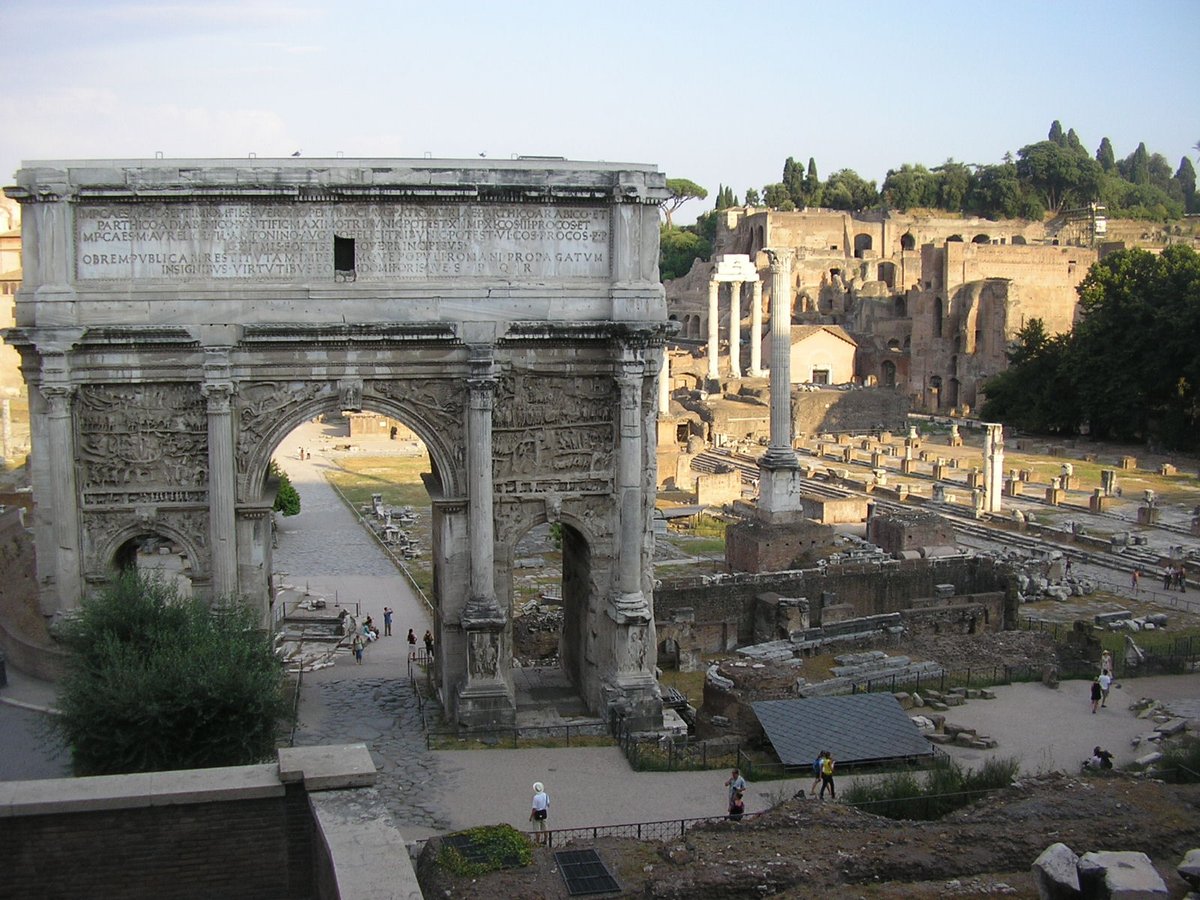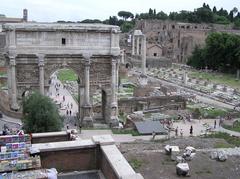
Umbilicus Urbis Romae: Visiting Hours, Tickets, and Historical Significance in Rome
Date: 14/06/2025
Introduction
The Umbilicus Urbis Romae—Latin for “Navel of the City of Rome”—is a monument of profound symbolic and historical importance located in the heart of the Roman Forum. Serving as the central point from which all distances in the ancient Roman Empire were measured, this modest yet powerful structure encapsulates the civic, spiritual, and imperial identity of Rome as caput mundi—the “head of the world.” This detailed guide presents the monument’s fascinating origins, architectural features, religious and civic roles, and practical information for visitors, including hours, ticketing, accessibility, and nearby attractions.
For up-to-date details and guided experiences, consult the Parco archeologico del Colosseo, the Official Rome Tourism Website, and platforms like Audiala.
Table of Contents
- Historical Background
- Visiting the Umbilicus Urbis Romae
- Nearby Attractions and Itineraries
- Tips for a Memorable Visit
- Frequently Asked Questions (FAQ)
- Conclusion
- Sources and Further Reading
Historical Background
Foundation and Mythology
The Umbilicus Urbis Romae is rooted in Rome’s legendary founding. According to tradition, Romulus, Rome’s first king, established the site after the burial of Remus, using Etruscan priests to oversee the foundation rituals. A central pit—mundus—was dug, symbolizing the universe’s vault. Into it, Rome’s first citizens deposited earth from their homelands and the season’s first fruits, an act uniting Rome’s people in a shared civic and spiritual identity (Wikipedia; Seindal Sights).
Architectural Evolution
The monument visitors see today mainly dates from an early third-century CE restoration under Emperor Septimius Severus, coinciding with construction of the nearby triumphal arch. The Umbilicus is a cylindrical brick structure approximately 1.5–2 meters high and 4.5 meters in diameter. Originally, it was clad in marble and likely taller, possibly topped with a statue or column (Seindal Sights; Jeff Bondono). Its conical shape and robust brickwork distinguish it from other Forum monuments.
A small base opening leads to an underground cavity, a symbolic gateway to the underworld. According to ancient custom, the pit was opened only three times a year on “nefasti” days (August 24, October 5, November 8), suspending all public activity to honor the departed (Northleg).
Religious and Civic Roles
The Umbilicus was both a sacred and practical point of reference. It marked the center from which all distances in Rome and the empire were measured, reinforcing the city’s status as the empire’s heart. Religious rites performed here maintained Rome’s pax deorum—the peace with the gods—while civic rituals unified its diverse population. The monument’s function as the “navel” or omphalos of Rome is mirrored in similar traditions at Delphi and other ancient cities (Jeff Bondono).
Visiting the Umbilicus Urbis Romae
Location and How to Get There
The Umbilicus Urbis Romae sits within the Roman Forum, between the Rostra and the Arch of Septimius Severus, near the Temples of Saturn and Concord. The Forum is accessible from entrances along Via dei Fori Imperiali and is a short walk from the Colosseo metro station (Line B) and several bus stops (Northleg; Madain Project).
Tickets and Opening Hours
- Opening Hours: The Roman Forum (and thus the Umbilicus) is generally open daily from 8:30 AM until one hour before sunset. Hours may vary seasonally and on public holidays—always check the official website before your visit.
- Tickets: Entry to the Roman Forum requires a ticket, typically combined with the Colosseum and Palatine Hill. As of June 2025, standard adult tickets are approximately €16, with discounts for EU citizens aged 18–25 and free entry for children under 18. On the first Sunday of each month, entry is free but expect larger crowds (Romewise).
Purchase tickets online in advance to avoid queues.
Accessibility
The Roman Forum’s ancient paving and uneven surfaces can be challenging for visitors with mobility issues. Some areas are wheelchair accessible, but others have steps or rough terrain. Consult the Parco archeologico del Colosseo accessibility information for details and assistance.
Nearby Attractions and Itineraries
Enhance your visit by exploring these key sites, all within walking distance:
- Arch of Septimius Severus: Triumphal arch celebrating Roman military victories.
- Rostra: The legendary speaker’s platform of ancient Rome.
- Temple of Saturn: One of Rome’s oldest temples.
- Temple of Concord: Symbolizing political harmony.
- Colosseum: Iconic amphitheater just east of the Forum.
- Lapis Niger: Ancient shrine with mysterious inscriptions.
A suggested itinerary: Start at the Colosseum, enter the Forum, visit the Umbilicus, Rostra, and surrounding temples, then ascend Palatine Hill for panoramic views (Time Out Rome).
Tips for a Memorable Visit
- Timing: Visit early or late in the day to avoid crowds and harsh sunlight.
- Footwear: Wear sturdy shoes for uneven terrain.
- Sun Protection: Bring water, a hat, and sunscreen.
- Guided Tours: Consider booking a guided or audio tour for deeper context (Audiala).
- Photography: Great photo opportunities in morning or late afternoon light. Capture the Umbilicus with the Forum ruins as backdrop.
Frequently Asked Questions (FAQ)
Q: What are the Umbilicus Urbis Romae visiting hours?
A: The monument is accessible during Roman Forum opening hours, typically 8:30 AM to one hour before sunset.
Q: Is a separate ticket required for the Umbilicus?
A: No. Admission to the Roman Forum includes the Umbilicus Urbis Romae.
Q: How accessible is the site?
A: Some pathways are accessible, but ancient paving can be uneven. Check official resources for up-to-date accessibility details.
Q: Can I enter the Umbilicus itself?
A: The structure cannot be entered; it is viewed from the Forum walkways.
Q: Are guided tours available?
A: Yes. Many tours of the Roman Forum include the Umbilicus; audio guides and apps like Audiala are also available.
Conclusion
The Umbilicus Urbis Romae, while modest in appearance, is a monument of immense historical and symbolic resonance. As the central marker of the ancient city and the anchor point for Rome’s mythological, civic, and imperial identity, it is an essential stop for anyone seeking to understand the heart of the Eternal City. Combine your visit with guided tours and neighboring sites, plan ahead for tickets and accessibility, and immerse yourself in the layers of history that make Rome unique.
For more information, download the Audiala app for audio guides and keep up with the latest updates on Rome’s archaeological treasures. Plan your journey to stand at the very navel of ancient civilization.
Sources and Further Reading
- Official Rome Tourism Website
- Parco archeologico del Colosseo
- Northleg: Roman Forum Buildings & Monuments
- Jeff Bondono: Umbilicus Urbis Romae
- Wikipedia: Umbilicus Urbis Romae
- Seindal Sights: Umbilicus Urbis Romae
- Madain Project: Map of the Roman Forum
- Romewise: Rome Events in June
- Time Out Rome: Best Attractions in Rome
- Audiala App for Rome Tours


















































































































































































































































